Employee Discipline Letter Template for Workplace Issues
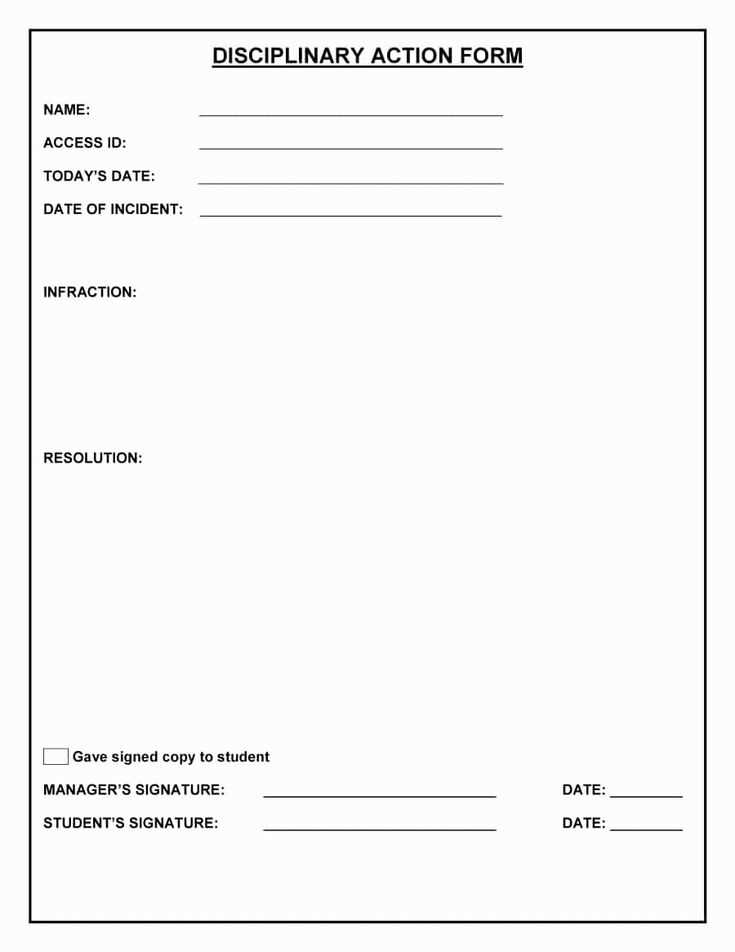
In any professional environment, addressing behavioral or performance concerns is essential for maintaining a productive atmosphere. When issues arise, having a clear and structured approach to communicate the necessary changes is crucial for both the organization and the individual. A formal written approach helps in documenting the issue, outlining expectations, and ensuring that the message is communicated with clarity and professionalism.
By providing a clear framework for addressing workplace challenges, these formal documents ensure transparency in the communication process. They also serve as a reference point for both parties should the issue need to be revisited in the future. Properly constructed messages play a key role in fostering a positive environment where both employers and employees can understand and address concerns constructively.
Workplace Performance Communication Framework
When handling performance issues or behavioral concerns in the workplace, it is important to follow a structured approach that ensures clarity and accountability. This section will provide guidance on creating a formal communication that outlines expectations, addresses the concern, and provides steps for improvement. By adhering to a clear structure, both parties can have a mutual understanding of the issue and how to move forward.
Key Components of a Formal Communication
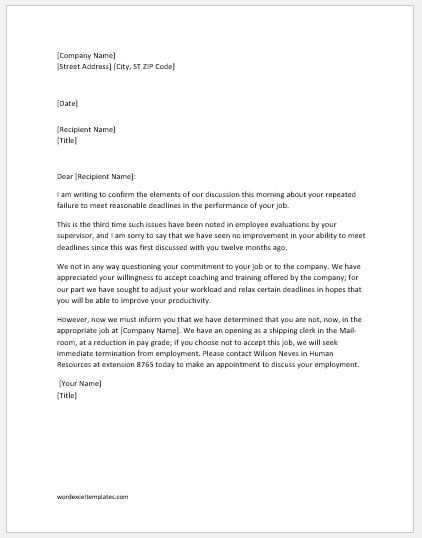
Effective messages should include specific information such as the nature of the concern, examples of unacceptable behavior or performance, and the desired improvements. It is important to maintain a professional tone while being clear and concise about the issue. Additionally, a follow-up plan should be included to track progress and establish a timeframe for improvements.
Maintaining Professionalism in Communication
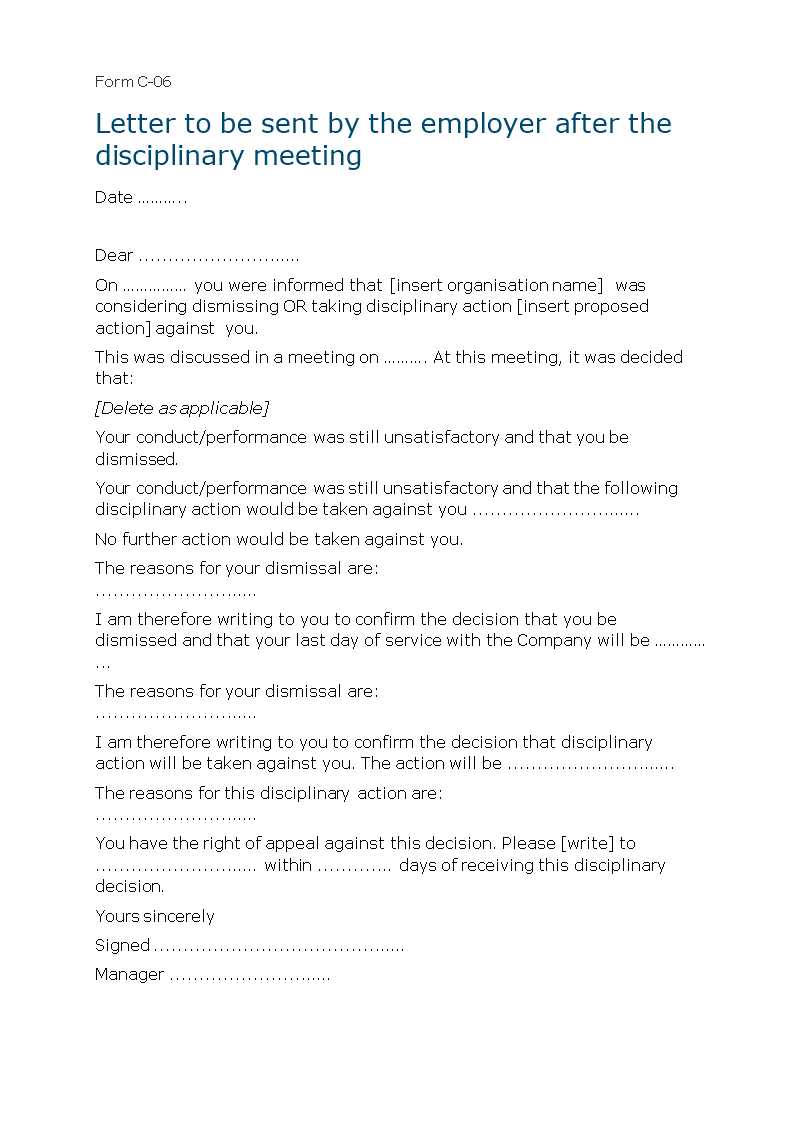
It is crucial to approach sensitive topics with tact and respect. The purpose of formal communication is not to punish, but rather to guide the individual toward a better understanding of the expectations and how they can meet them. By fostering an open dialogue, both the employer and the individual can work together to achieve a productive resolution.
When to Use a Warning Notice
There are specific circumstances when formal communication is necessary to address performance or behavioral issues in the workplace. A structured warning is often issued when informal discussions or coaching have not led to the desired improvements. It serves as a clear indication that the issue needs immediate attention and resolution. Understanding the right moments to initiate such formal communication helps ensure that it is both effective and appropriate.
Signs That a Formal Notice Is Needed
- Repeated performance issues despite previous discussions.
- Failure to meet established expectations or standards.
- Consistent behavioral problems that affect team dynamics or company culture.
- Failure to comply with established policies or procedures.
Steps to Take Before Issuing a Formal Warning
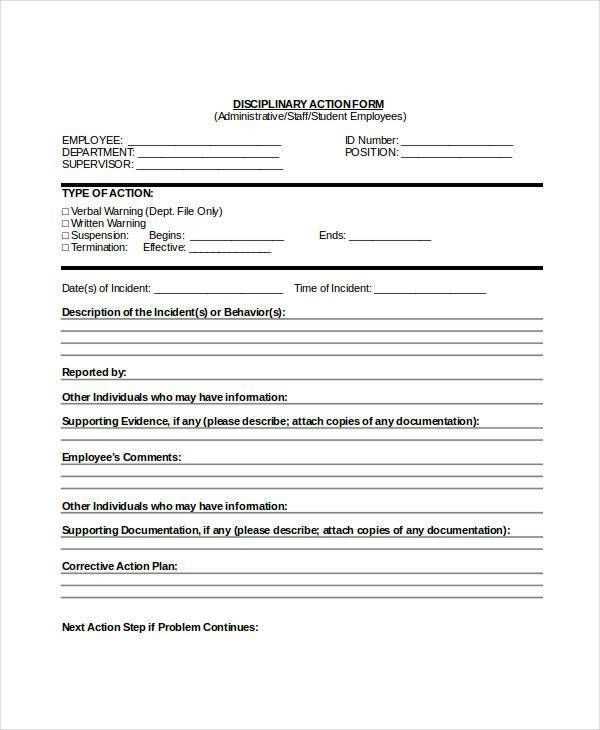
- Assess the situation and determine whether the issue has been addressed informally.
- Ensure that the problem is documented with specific examples of the behavior or performance issues.
- Consult with relevant parties (e.g., HR, supervisors) to confirm that a formal communication is necessary.
- Prepare the communication in a clear, professional tone, outlining the issue and corrective actions required.
Essential Components of a Formal Warning
A well-constructed formal communication addresses critical details to ensure the issue is clearly understood by both the individual and the organization. Key elements include an accurate description of the issue, clear expectations for improvement, and a timeline for corrective actions. Including these components ensures the message is not only professional but also effective in driving the necessary changes.
Key Information to Include
- Clear Description of the Issue: Specify the problem or behavior that led to the formal communication.
- Examples of Unacceptable Behavior or Performance: Provide specific instances to illustrate the concern.
- Expectations for Improvement: Detail what needs to be done to resolve the issue and align with company standards.
- Timeline for Change: Outline a reasonable timeframe for improvement and set follow-up meetings to assess progress.
- Consequences of Continued Issues: Explain potential outcomes if no improvement is seen, including further formal actions.
Ensuring Professional Tone and Clarity
Maintaining professionalism throughout the communication is crucial. The tone should remain respectful and focused on the desired outcome. Avoiding unnecessary emotional language or personal attacks ensures the message is seen as constructive rather than punitive, fostering a more positive approach to resolving the issue.
Steps for Writing an Effective Warning
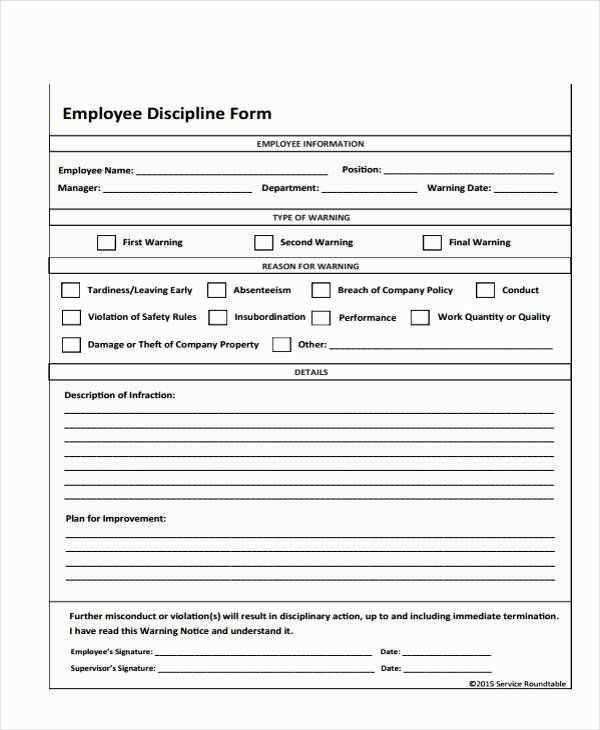
Creating an impactful formal communication requires careful planning and attention to detail. The message should be clear, concise, and structured in a way that highlights the key points while remaining professional. By following a systematic approach, you can ensure that the communication is both effective in addressing the issue and supportive of the individual’s growth.
| Step | Action |
|---|---|
| 1. Understand the Issue | Before writing, ensure you have a clear understanding of the problem, including the specific behavior or performance concerns that need to be addressed. |
| 2. Use Clear and Specific Language | Be precise in your description of the issue, providing examples where appropriate to avoid any confusion. |
| 3. Set Expectations for Improvement | Clearly outline the steps that need to be taken to resolve the issue and meet organizational standards. |
| 4. Establish a Timeline | Provide a reasonable timeline for the individual to make the necessary changes and improve their performance. |
| 5. Maintain a Professional Tone | Ensure the message remains respectful and constructive, focusing on solutions rather than assigning blame. |
Common Errors to Avoid
When drafting formal communications to address performance or behavioral concerns, it’s essential to avoid certain pitfalls that can undermine the effectiveness of the message. Common mistakes include unclear language, lack of specific examples, and failing to set clear expectations for improvement. These errors can lead to confusion, escalate tensions, or even legal complications. Understanding what to avoid ensures that the communication remains constructive and focused on positive outcomes.
Some errors to be cautious of include:
- Vague Language: Avoid general terms that could be misinterpreted. Be specific about the issue to ensure there’s no ambiguity.
- Lack of Documentation: Failing to include examples or evidence of the problematic behavior can weaken the message and its credibility.
- Overly Harsh Tone: Even if the issue is serious, a harsh or punitive tone can alienate the recipient. Maintain professionalism and focus on improvement.
- Failure to Set Clear Expectations: Without clear, actionable steps for change, the recipient may not understand what needs to be done to resolve the issue.
- Omitting a Follow-Up Plan: A clear timeline for improvement and follow-up ensures accountability and tracks progress effectively.
Legal Aspects of Disciplinary Warnings
When addressing performance or behavioral issues formally, it is crucial to consider the legal implications of the communication. Properly handled, such actions can protect both the organization and the individual involved. Failing to adhere to legal guidelines can lead to disputes, claims of unfair treatment, or even litigation. Understanding the rights of the individual and ensuring fairness in the process helps to mitigate potential legal risks.
Key Legal Considerations
- Non-Discriminatory Language: Ensure that the communication does not discriminate based on race, gender, age, disability, or any other protected category under labor laws.
- Documentation of the Issue: It is essential to document all instances of the issue to provide evidence that supports the action taken and to show that the employee was given a fair opportunity to improve.
- Consistent Enforcement of Policies: Be sure to apply company policies consistently to avoid claims of favoritism or unequal treatment, which can have legal consequences.
Compliance with Employment Laws
Always ensure that any formal communication aligns with relevant employment laws, including those governing wrongful termination, workplace harassment, and employee rights. Regularly review and update policies to remain compliant with local, state, and federal regulations. Consulting with legal counsel before taking disciplinary actions can provide additional protection and guidance in complex situations.
Effective Communication Practices in the Workplace
Clear and respectful communication is a fundamental aspect of a healthy and productive work environment. When addressing concerns, feedback, or providing guidance, it is crucial to maintain professionalism and clarity. Effective communication ensures that both parties understand expectations, responsibilities, and areas for improvement, fostering collaboration and trust. By implementing best practices, organizations can handle issues more efficiently and build stronger relationships with their team members.
- Be Clear and Concise: Avoid jargon or overly complex language. Keep the message simple and to the point to ensure clarity.
- Listen Actively: Encourage open dialogue by actively listening to the concerns of others, showing empathy, and responding thoughtfully.
- Maintain a Positive Tone: Even when addressing serious matters, a respectful and positive tone can prevent misunderstandings and promote a constructive conversation.
- Focus on Solutions: Instead of dwelling on problems, shift the conversation toward finding solutions and actionable steps for improvement.
- Follow Up: After discussing concerns, check in regularly to assess progress and ensure that expectations are being met.
By following these practices, both managers and employees can build a positive communication culture that leads to more effective problem-solving and a more cohesive workplace environment.